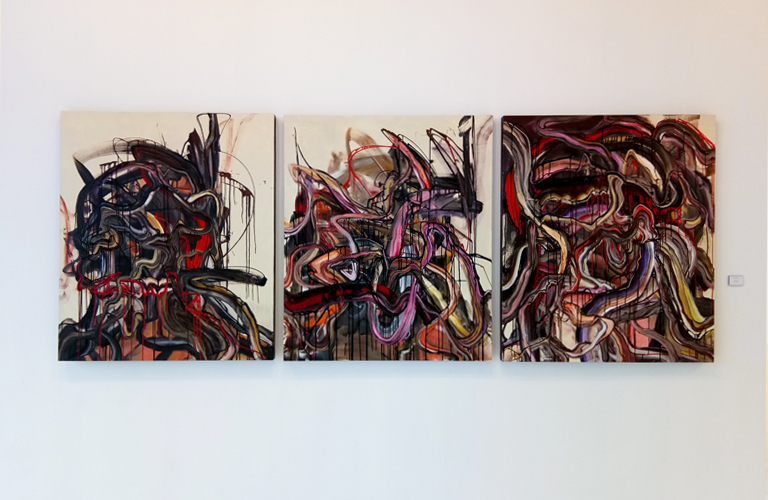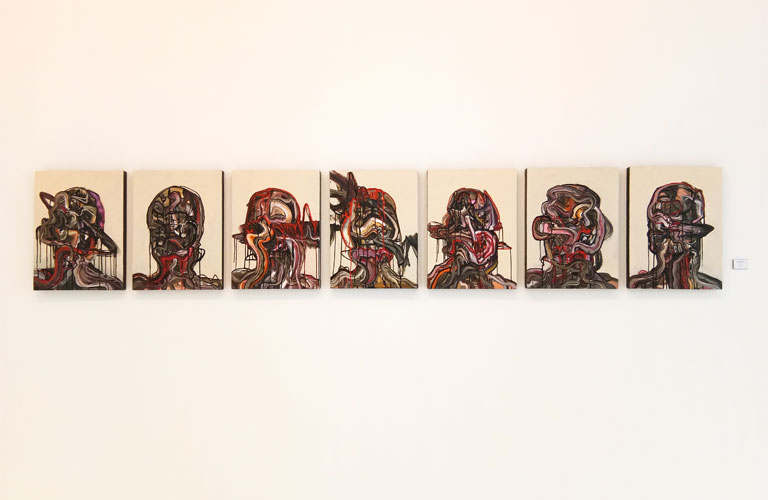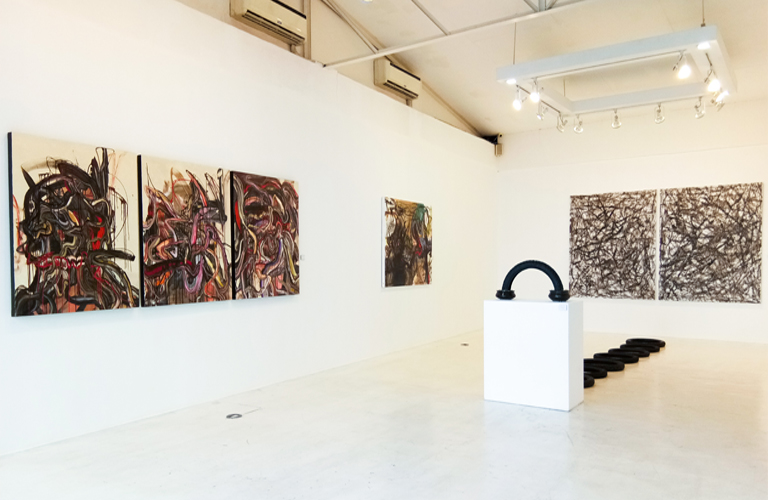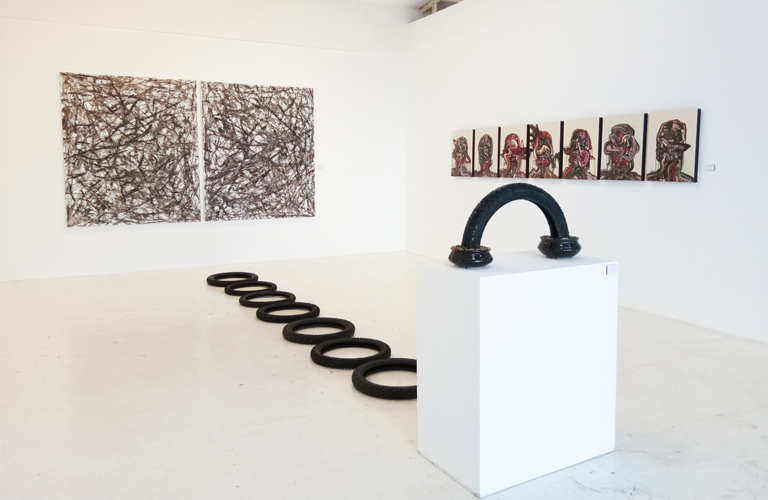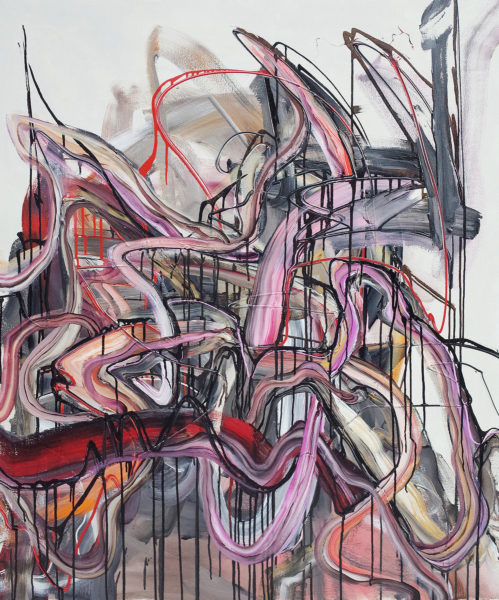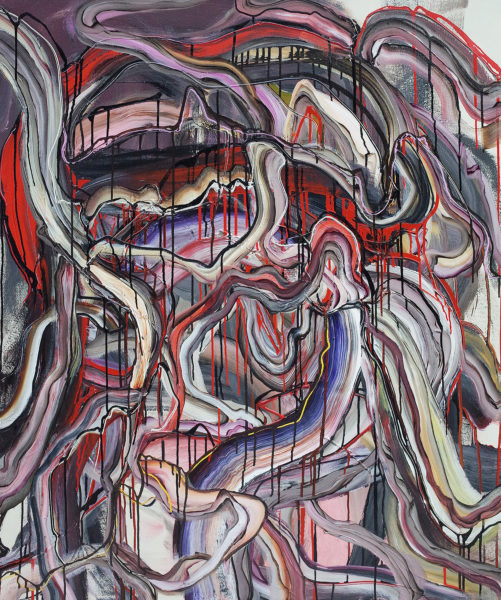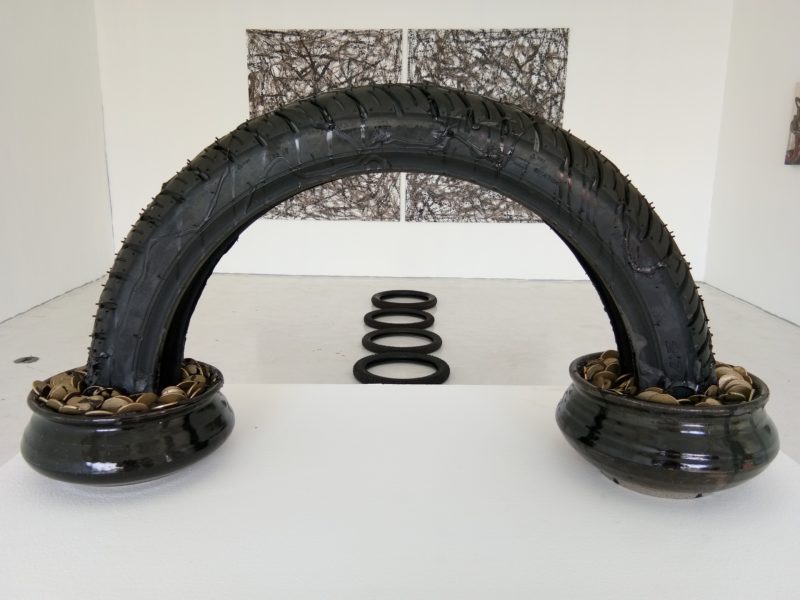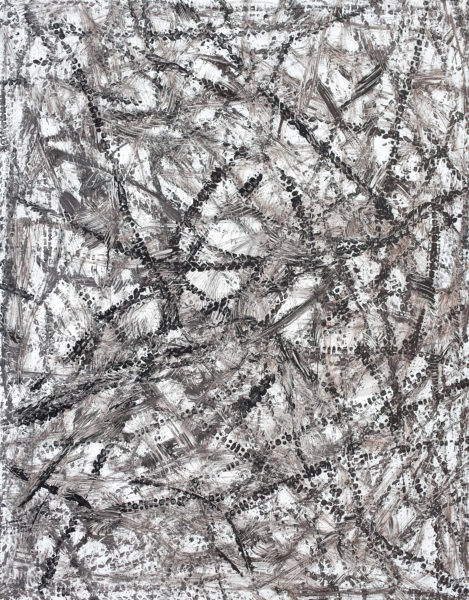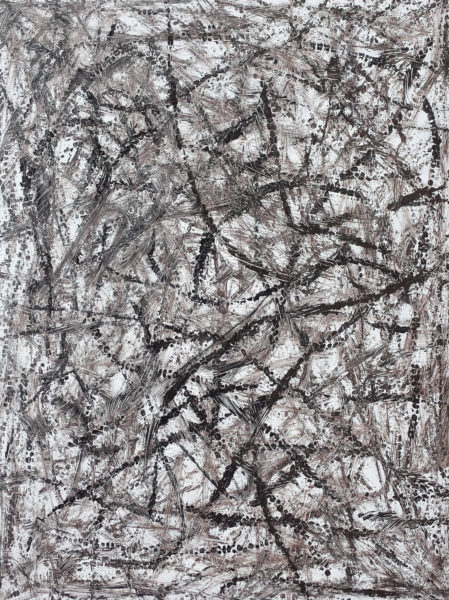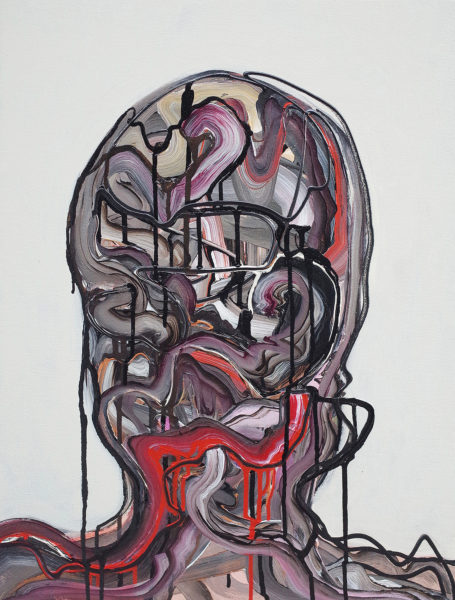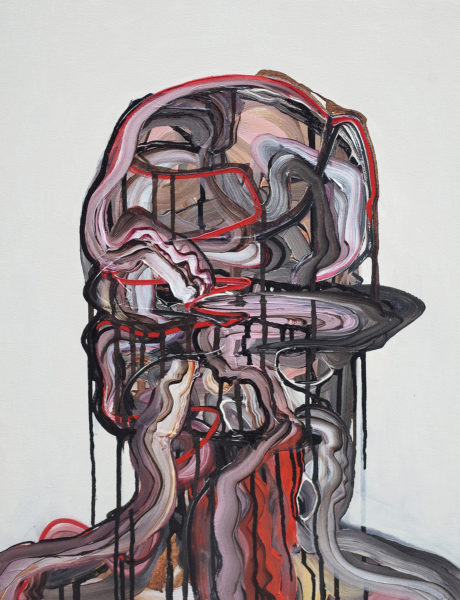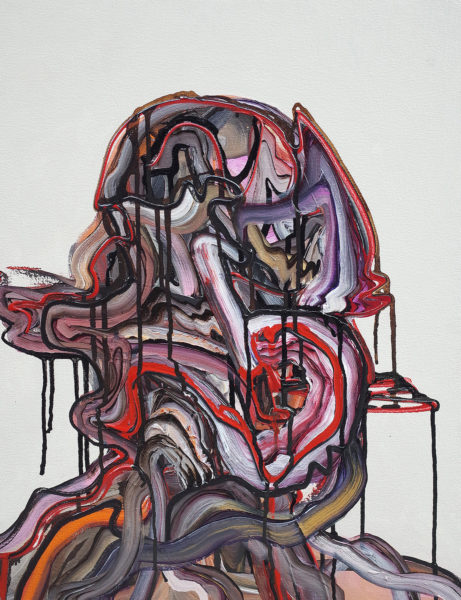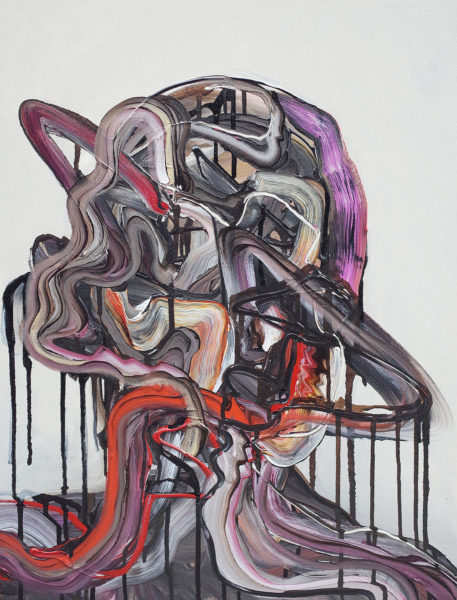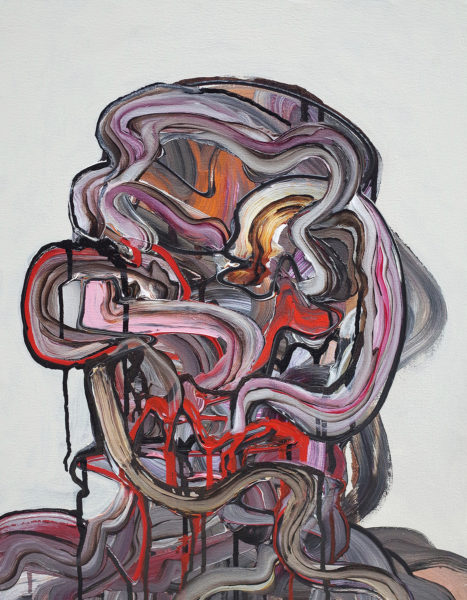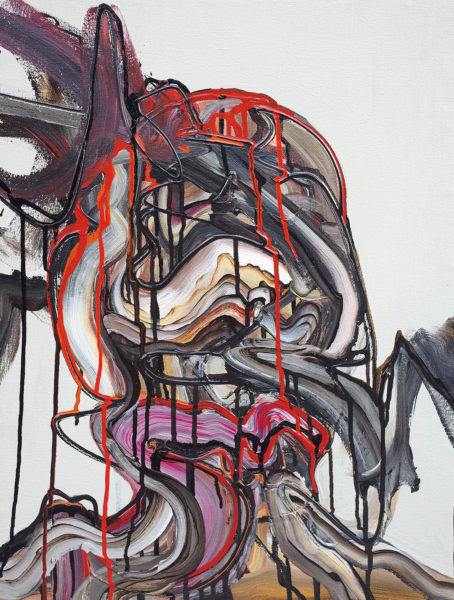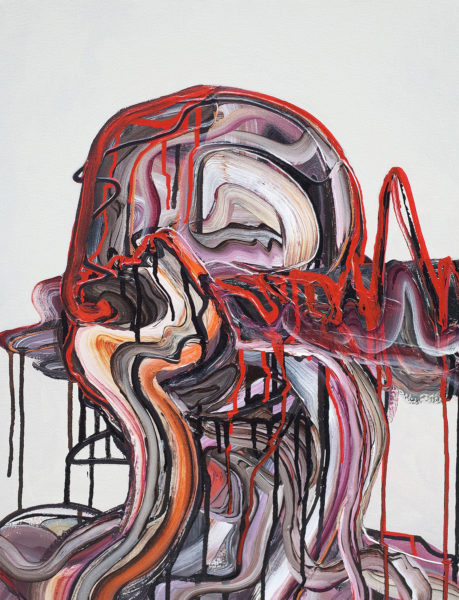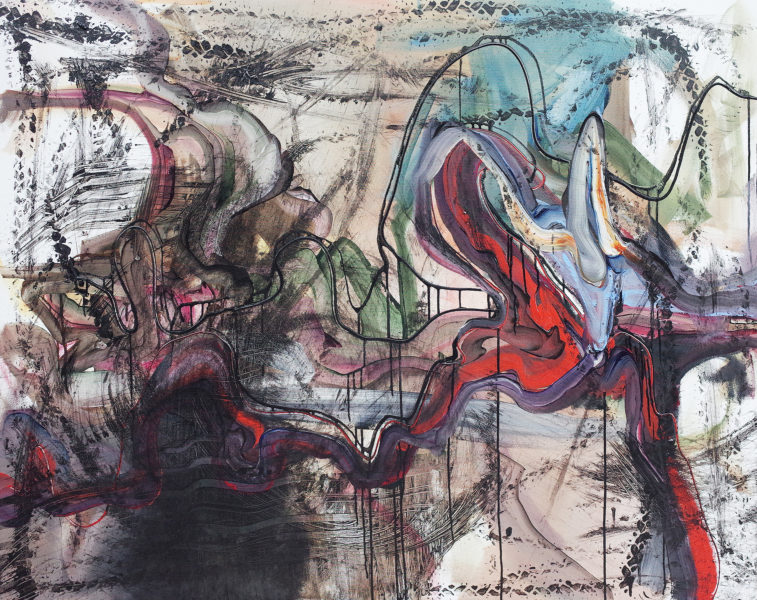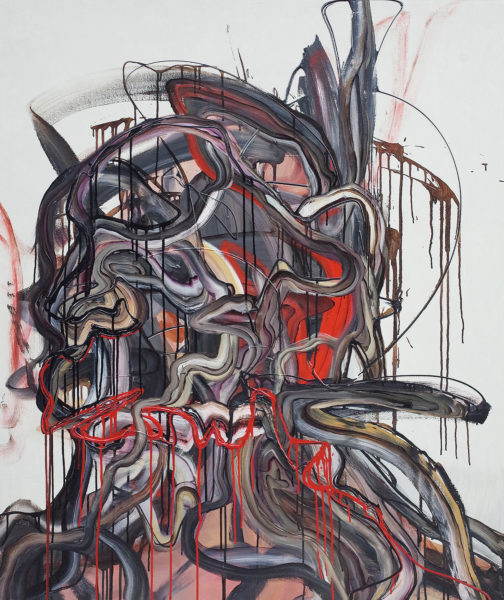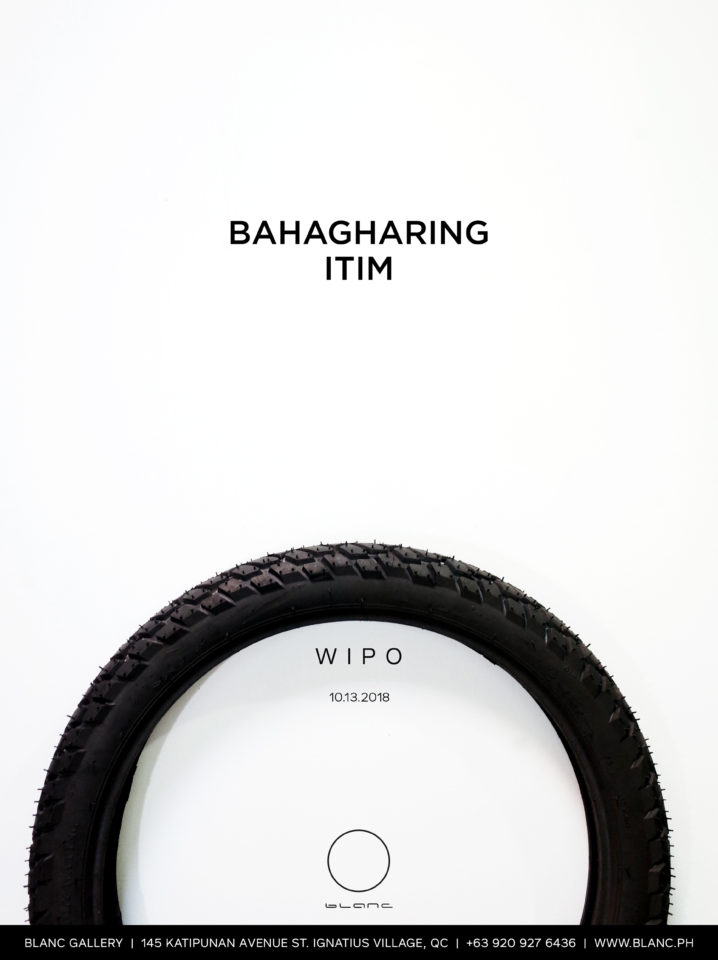
BAHAGHARING ITIM
Wipo
There is a tire factory in Valenzuela City where everything is draped in black dust. The air inside is thickened by carbon powder mist; workers are clothed in the same mist they try not to breathe in – shirts as makeshift masks tied around their faces. The machines are stained black like the floor and the ceiling and the walls that look like an aftermath of a fire – still smoldering at the edges.
There is a mechanical engineer who has been working six and a half days a week in this factory for ten years now. He has great pride in his work.
There is a son who saw his father go through episodes of elation and decline, but mostly the latter. He blamed the half Sundays.
***
In Sampung Taon, a series of three paintings, Wipo translates what he perceives as his father’s decline into a seamless three-stage mutation of what appears to be an abstraction of a man disintegrating and diffusing into quiet chaos that cannot be contained inside the squareness of a canvas.
Having been working predominantly on themes of human behavior and the makings of the human mind, the depiction of decline in Sampung Taon is evidently of a psychological nature, where the artist injects as much of himself into his primary subject. How much of it is the artist? How much of it is his father?
Bahagharing Itim, Wipo’s first one-man exhibition started as a son’s selfish initiative to celebrate his father, hence the immersion into his father’s world, the tire factory. Further involving himself into the life in the factory not only led to a reintroduction of his father, but also an introduction to the lives of the factory workers. This steered Bahagharing Itim into becoming a commemoration and an observance of respect towards the common Filipino worker.
Manggagawa ng Bahagharing Itim, a series of seven paintings, are portraits of the factory workers the artist has interacted with in his regular visits to the factory. Through the use of his current painting style, Wipo effectively obscures the workers’ identities, melding and contorting, warping and dissolving them into surreal forms that suggest a person but not a particular one – an epitome of the common worker, the majority of Filipinos.
The artist took literal inspiration from the proverbial “gulong ng palad” in Bakas Ng Mga Araw, where he let tires roll and leave marks on his canvas. Together with his installation, Hakbang Sa Paggawa Ng Bahaghari, and his sculpture, Kinsenas-Katapusan, Wipo sews together his depiction of life in Bahagharing Itim – a compact of seven days continuously rotating in a cycle of hardship, hard work and reward.
***
There is a son who swore off half Sundays, so when he got the chance, he quit his creative agency job. He thought he’d work as an artist with time on his hands.
There is a mechanical engineer whose hard work is wished to be celebrated by his son.
There is a tire factory in Valenzuela City which was recently frequented by one of its engineer’s son. Everything is draped in black dust. The air inside is thickened by carbon powder mist; workers are clothed in the same mist they try not to breathe in. With shirts as makeshift masks tied around their faces, they taught the son respect and gratitude for the half Sundays.
– Marionne Contreras
Works
Documentation
